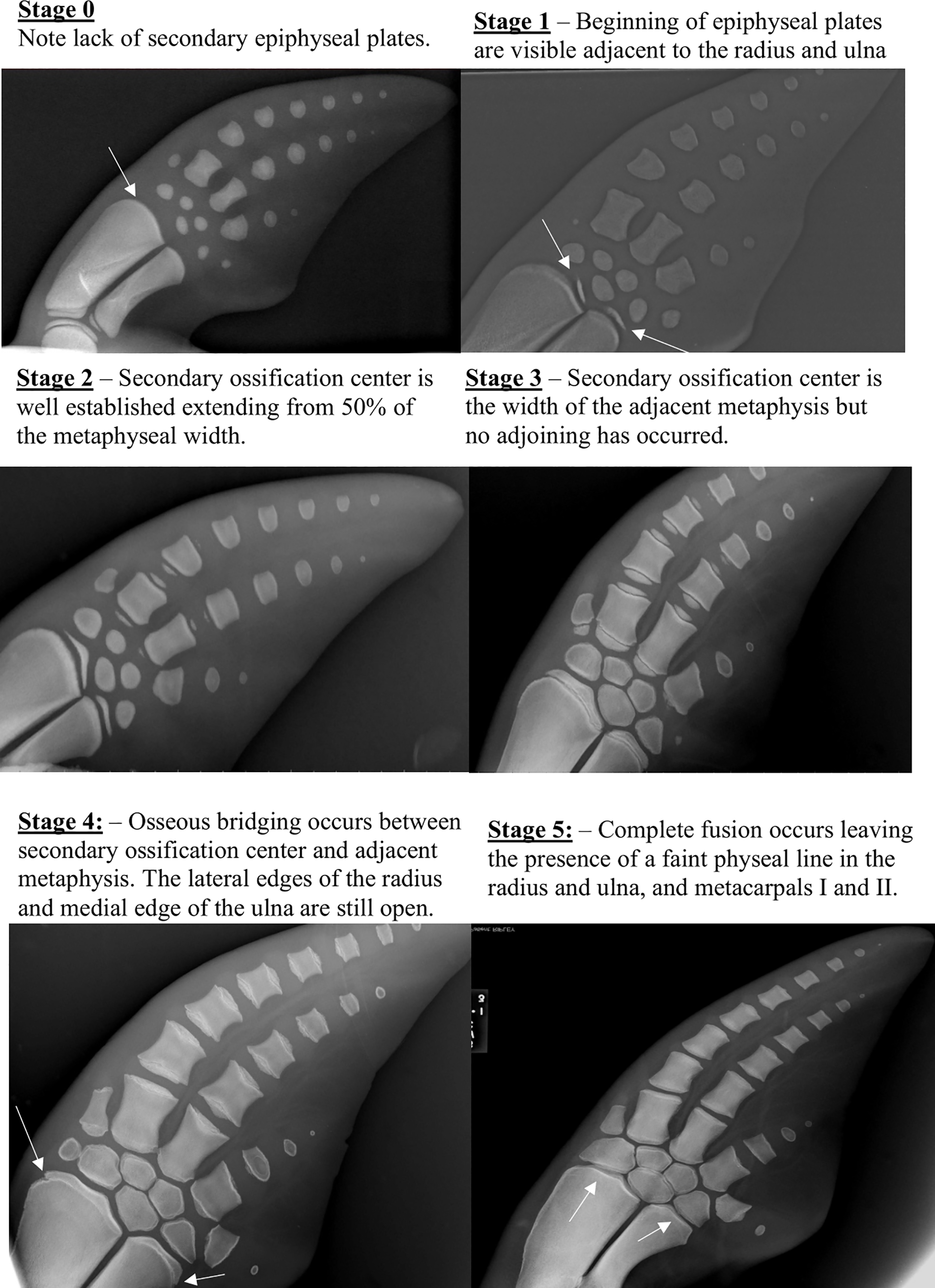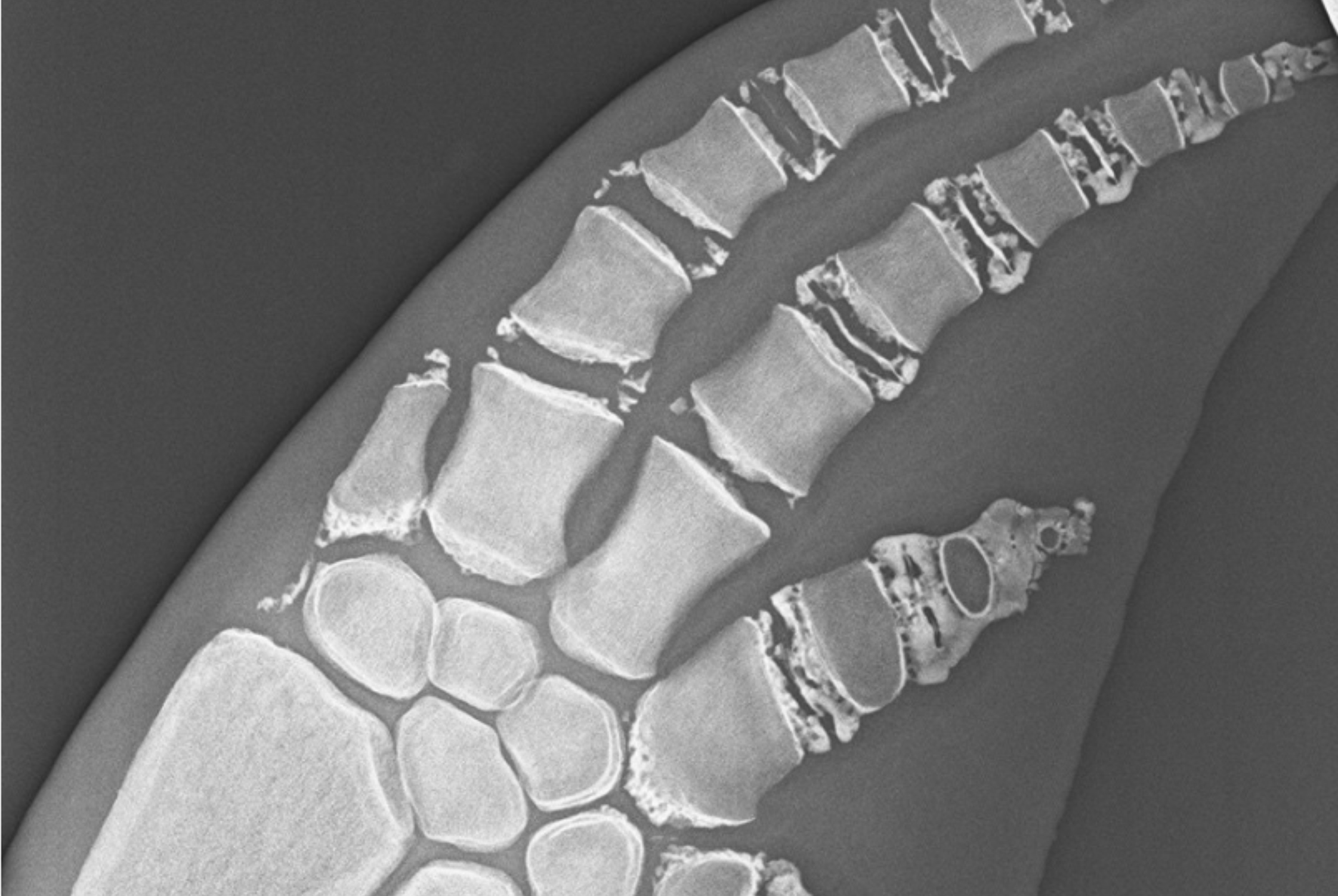X-ray images (radiographs) of human hands have been used for decades as a method of confirming age by examining the predictable chronological changes occurring to the growth plates of each bone. We wanted to know if using X-rays of dolphin flippers could provide the same information.
The goal is to establish a non-invasive method of determining the ages of dolphins  using a single X-ray and a new way to accurately obtain age information across all age ranges. Accurately estimating the ages of animals will improve understanding of population demographics, reproductive status, and interpretation of biological data.
using a single X-ray and a new way to accurately obtain age information across all age ranges. Accurately estimating the ages of animals will improve understanding of population demographics, reproductive status, and interpretation of biological data.
The most frequently used methods to age bottlenose dolphins include tooth extraction, counting dental growth layer groups and dental radiography. But these methods are inaccurate in dolphins older than 13 years because of overlapping growth layer groups and worn teeth.
One study applied this new technology to free-ranging dolphins for the first time during the 2019 health assessments of Sarasota Bay dolphins.
The study found that the use of this method in conjunction with other currently used methods (such as body length, dental radiographs, tooth GLG or future methods such as DNA methylation) will improve accuracy of the age prediction and facilitate validation.
Radiography not only provides a single age estimation but, potentially more importantly, also provides information regarding the maturation process over time, which is currently unachievable accurately via other methods yet still very relevant for understanding natural history in ecological studies.
Funding to establish this technique was provided in part by a grant from the Gulf of Mexico Research Initiative, Oceanogràfic Valencia and by the National Marine Mammal Foundation.
- Read the study “Radiographic assessment of pectoral flipper bone maturation in bottlenose dolphins (Tursiops truncatus), as a novel technique to accurately estimate chronological age” in the journal PLOS One.
— By Ashley Barratclough, National Marine Mammal Foundation; Daniel García-Párraga, Oceanogràfic Valencia





